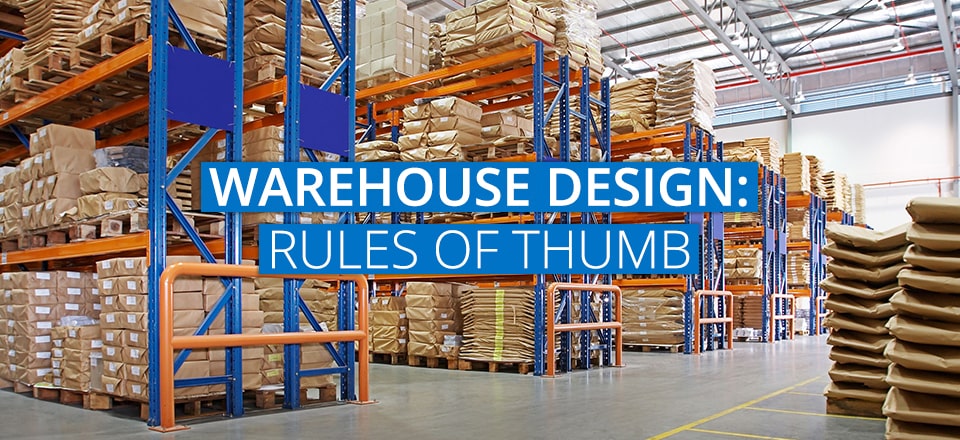It’s not uncommon for delegates at our workshops and seminars to ask us to can share our ‘rules of thumb’ on warehouse design. Therefore, we thought we’d put them here in an article, so anyone can refer to them when necessary. We’ve also added a checklist of things to consider during the early stages of warehouse design.
Warehouse Design Rules of Thumb
- Ideal Land to Building ratio in lineal metres, 1.7:1–2:1
- Building aspect ratio, 1.7:1 – 2:1
- Ideal Warehouse Height at Springing Line 9.5-10.5 metres
- Pallet per Sq metre ratio 1 – 1.2 (with conventional storage racking)
- Truck turning space 30-40 metres
- 20 to 25% of the warehouse floor should be left for non-storage operations e.g., receiving, dispatching, staging.
Important Planning Points
- Always plan for driver-side reversing
- Do not compromise aisle space for the sake of a few extra storage bays
- Avoid funnels and bottlenecks
Of course, in a brief guide like this one, we can only share some basic tips for warehouse planning and design. But if you want some real help, you’ll find our warehouse design services are just what the DC Doctor ordered.
We can work with you on your premises, wherever you are located, or collaborate with you on a fully remote basis to ensure your warehouse is designed specifically to suit your business, not merely according to rules of thumb.
Checklist of Warehouse Design Considerations
- Requirements and specifications for loading docks
- MHE battery charging/changing stations (location and provision for ventilation)
- Building support columns should be spaced/located in a way that allows for optimal layout of storage media and aisles
- Number of warehouse doors/loading and unloading bays
- Location of offices and other non-storage space (canteen, restrooms, other)
- Ensure lighting will be adequate and ideally, environmentally friendly (LED, induction?), and low maintenance
- Minimisation of obstacles or areas creating bottlenecks in warehouse flow
- Minimisation of travel distances within the warehouse
- Fire prevention and firefighting equipment
- Adequate drainage should be designed into the warehouse site
- Low-maintenance warehouse roof design
- Heating, climate control, and insulation
- Radio frequency, LAN/WAN, or other communication/data-transfer infrastructure
- Storage areas for empty pallets
- Waste disposal solutions
- Security concerns, such as car parking, checkpoints, location of cameras
- Future plans for automation, expansion and/or a change in storage requirements
Need More Help with Warehouse Design and Planning?
I hope this information will help you in your warehouse planning. I’m sure if you have any other questions, one of our warehouse design specialists will be glad to help you. Please feel free to send us a message on our contact page and mention that you’d like to discuss warehouse design.
If your needs are more extensive, Logistics Bureau offers a full range of warehouse design consulting services. They include:
- Assistance with warehouse improvement
- Warehouse technology planning and selection
- Advice on equipment and assistance with selection and procurement
- Warehouse design project management
- Distribution network analysis, design, and redesign.
- New warehouse design (exterior and interior)
- Warehouse layout optimisation
You’ll find more details on our warehouse design services page, so please do stop by and take a look. It features case studies of some of our successful projects and provides you with some easy options for getting in touch with us.
Editor’s Note: The content of this post was originally published on Logistics Bureau’s website dated June 07, 2022, under the title “Warehouse Design – Rules of Thumb… And a Checklist“.



